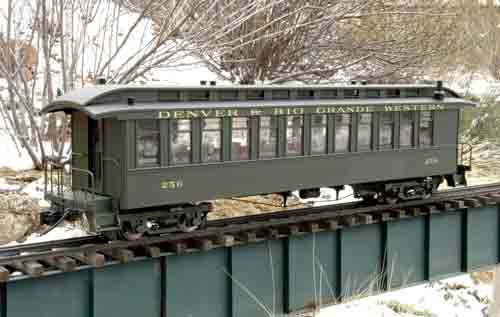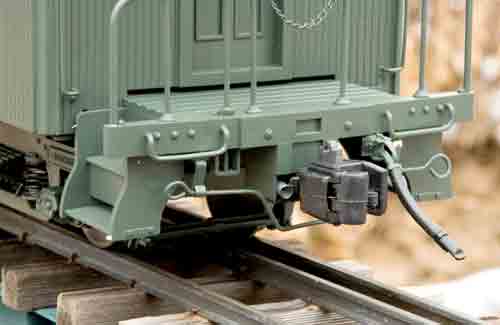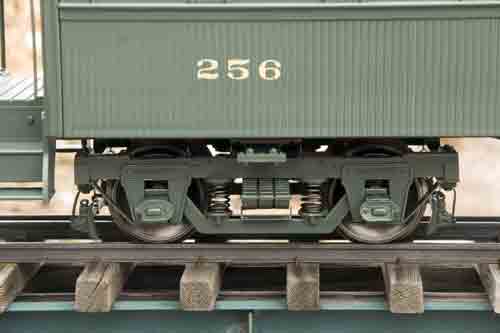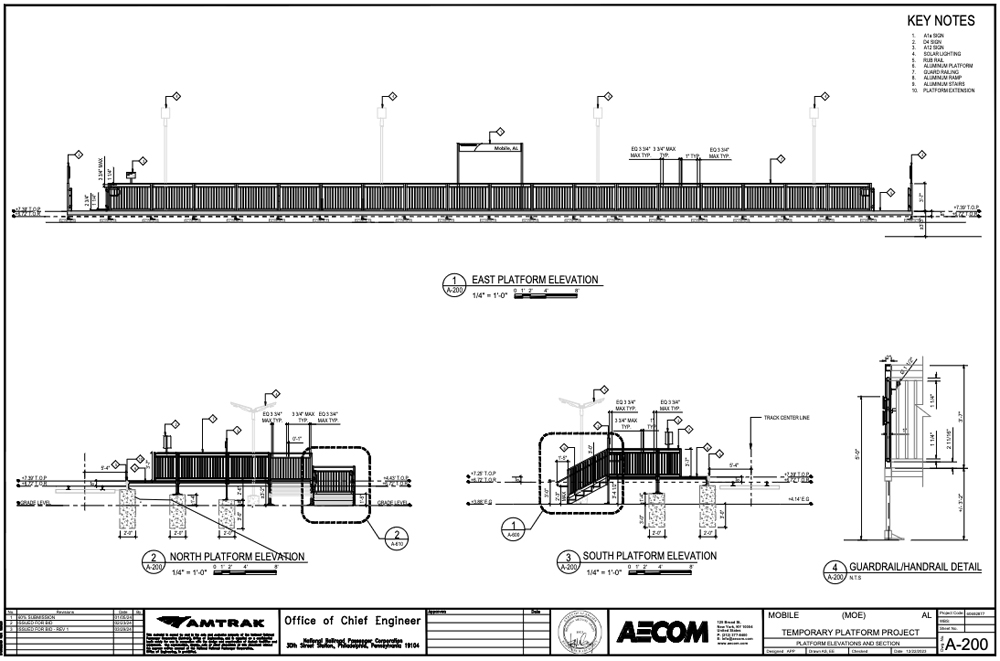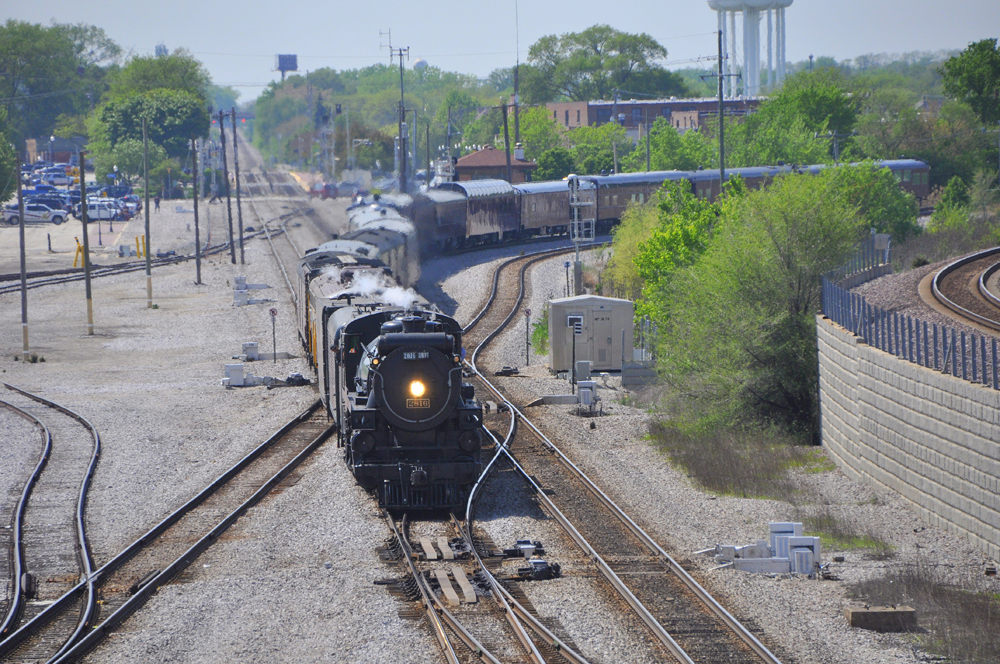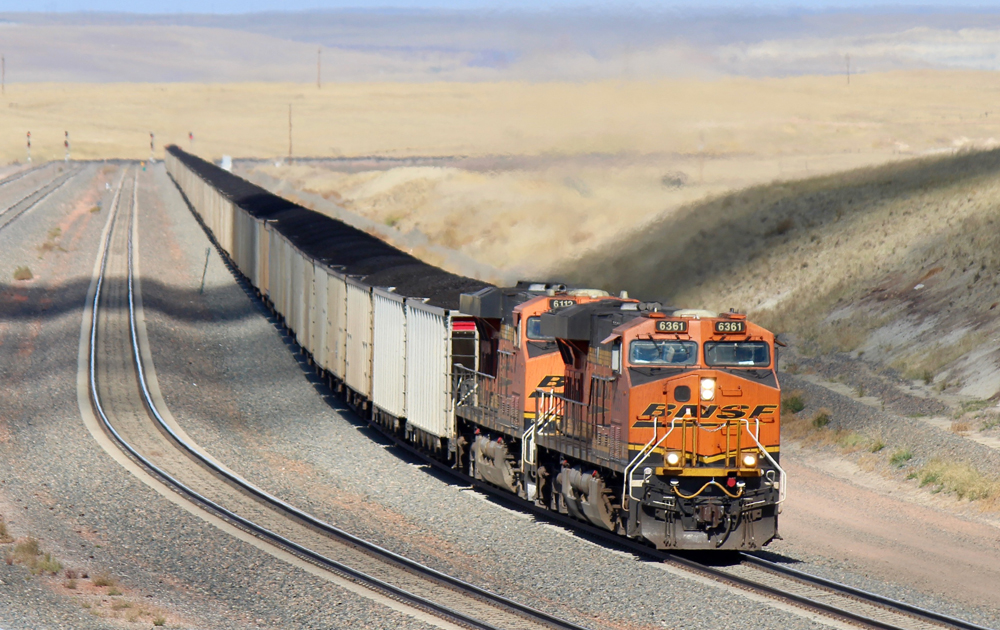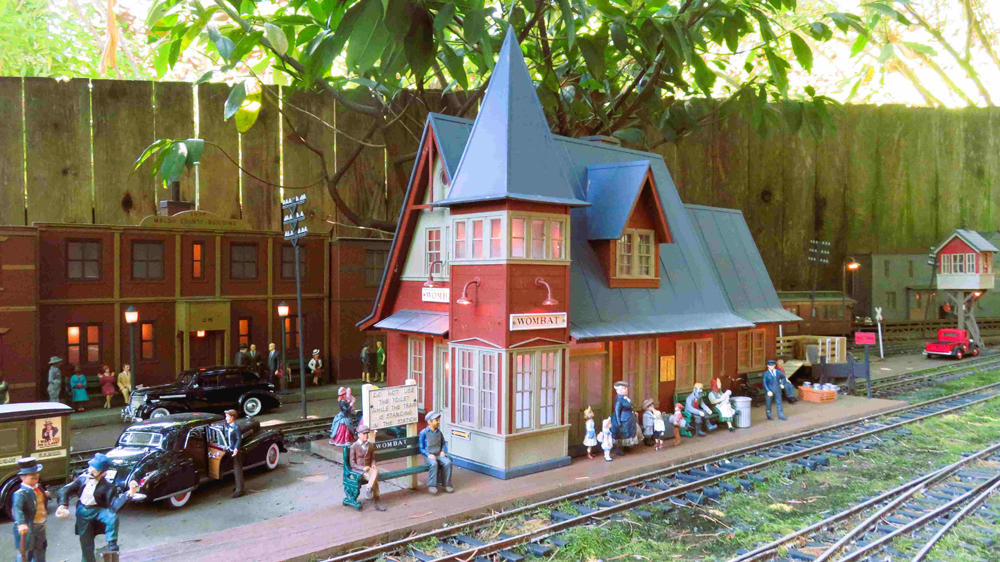Vital statistics
1:20.3 scale, gauge-1 Jackson & Sharp coach
AMS
33268 Central Ave
Union City CA 94587
Price: $1,116 (four-car set); available singly from some dealers
Web site: www.accucraft.com
Injection-molded plastic passenger coach with metal trucks and wheels; brass details; modeled after Denver & Rio Grande equipment built by the Jackson & Sharp Co.; body-mounted knuckle couplers; full interior with lighting; coupler lift bars; air hoses; partial brake rigging; available unlettered or lettered for D&RGW or C&S (green), or for RGS (red). Dimensions: length, 253/4″ over end beams; width, 47/8″; height, 75/16″. In 1:20.3 scale, this works out to 43’63/4″ x 8’3″ x 12’4″, respectively
Pros: Superb model of an impressive prototype; well detailed, but sturdily built; complete interior; correct scale/gauge combination
Cons: Roof and interior colors unrealistic; pickups for interior lighting add considerable drag to wheels; weak coupler mounts; gap between end walls and platform
This model is a wonderful reproduction of those classic coaches. Every dimension I measured was spot-on in 1:20.3 scale, making this a truly impressive car at almost 26″ long. The plastic molding is outstanding. The paint is smooth and uniform and the lettering is crisp and opaque. The car’s interior includes seats with correct representations of the prototype’s cast-iron arms, a wall-mounted water cooler, and toilet closets and pot-belly stoves at each end. The interior is lighted, with track power collected by wipers on all eight wheels. It is, in short, a stunningly beautiful, mass-produced scale model.
There are some detail compromises in making a mass-produced model, of course. The couplers stick out much farther beyond the end sills than those on the prototype, to help them negotiate 24″-radius curves. The roof is molded in a semi-gloss black, an instant tip-off that you’re looking at a plastic car fresh out of the box. The whole interior is molded out of mahogany-colored plastic, so everything inside (even the stoves) is the same uniform brown. Luckily, the cars can be easily disassembled by removing screws in the bottom, so the new owner can add some authentic details into the color scheme.
Mechanically, the car is outstanding, with a couple of notable exceptions. It is well detailed but strong enough to withstand lots of handling. While the car body is plastic, the trucks and wheels are metal, lowering the center of gravity and improving stability. The wheels should roll fairly easily, but they are hampered by strong friction from the power pickups for the interior lights. This car is big and rather heavy (6 lbs. 2 oz.), so the additional drag may prove too much in a long train. I expect a lot of people will remove the wipers (especially those who use onboard battery or steam power) and install a battery box for the lights. That weight also puts a lot of stress on the
couplers, and some early owners have reported the mounting posts snapping off when cars slam together. Although repairing this is simple, a better design of the mount would have prevented it.
While you have the car apart to repaint the interior, you should also trim the ends of the interior floor to let the body sit down on the frame completely, eliminating the small but unsightly gap between the end walls and the platform. Instructions for this are available on the Internet.
There are a couple of omitted details that may or may not warrant upgrading. The underside of the car is moderately detailed: the brake reservoir and cylinder are there between the truss rods, but the brake levers and rods are only partially modeled. This is not a concern for most people, as we don’t want to see our cars from the bottom in normal operation.
More disturbing, from a passenger’s point of view, is the handling of the toilet closets. They are empty, which is painfully obvious from the outside because the glass in their windows is clear. Oops! The prototypes have frosted panes in those windows for privacy, so owners will want to frost them on the inside.
Finally, some small things: the brake wheels don’t fold up against the platform railings as on the prototype, the truck stabilizer bars are too far from the pads on the car body, and there are no safety chains on the trucks-minor things, all. As you can see, finding fault with these cars mostly requires nitpicking. They are beautifully made.
A good number of the Rio Grande Southern’s passenger cars were 1880 Jackson & Sharp cars that originally came from the D&RGW, according to Ferrell’s book, Silver San Juan, so the red coaches are exact scale models of RGS cars in the 250 series.
The dimensions of the Jackson & Sharp cars do not match any of the rolling stock on the Colorado & Southern exactly (according to the Narrow Gauge Pictorial, Vol. VIII), and the C&S stock was built by other companies, but the prototype cars whose numbers AMS used were close in length and virtually identical in appearance. While they are not scale models of actual C&S equipment, they will look authentic. Many other railroads bought Jackson & Sharp coaches, as well, so the unlettered version would be at home on most narrow-gauge garden railways.
In sum, Accucraft has scored big with these cars. We have been waiting for R-T-R passenger cars since the first 1:20.3 locomotives appeared, but these were worth the wait. They are top-notch models and with only a little detailing could be “museum-quality” models. Highly recommended for 1:20.3-scale fans.





